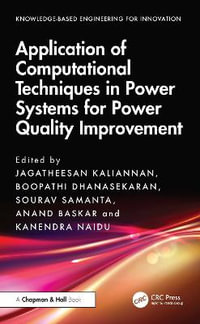
Spectral Feature Selection for Data Mining
By: Zheng Alan Zhao, Huan Liu
Hardcover | 14 December 2011 | Edition Number 1
At a Glance
Hardcover
RRP $420.00
$359.75
14%OFF
Available for Backorder. We will order this from our supplier however there isn't a current ETA.
ISBN: 9781439862094
ISBN-10: 1439862095
Series: Chapman & Hall/CRC Data Mining and Knowledge Discovery Series
Published: 14th December 2011
Format: Hardcover
Language: English
Number of Pages: 220
Audience: General Adult
Publisher: Taylor & Francis Inc
Country of Publication: GB
Edition Number: 1
Dimensions (cm): 23.4 x 15.6 x 1.8
Weight (kg): 0.57
Shipping
| Standard Shipping | Express Shipping | |
|---|---|---|
| Metro postcodes: | $9.99 | $14.95 |
| Regional postcodes: | $9.99 | $14.95 |
| Rural postcodes: | $9.99 | $14.95 |
Orders over $79.00 qualify for free shipping.
How to return your order
At Booktopia, we offer hassle-free returns in accordance with our returns policy. If you wish to return an item, please get in touch with Booktopia Customer Care.
Additional postage charges may be applicable.
Defective items
If there is a problem with any of the items received for your order then the Booktopia Customer Care team is ready to assist you.
For more info please visit our Help Centre.
You Can Find This Book In
This product is categorised by
- Non-FictionComputing & I.T.DatabasesData Mining
- Non-FictionMathematicsCalculus & Mathematical AnalysisFunctional Analysis & Transforms
- Non-FictionEconomicsEconometricsEconomic Statistics
- Non-FictionComputing & I.T.Computer Science
- Non-FictionEngineering & TechnologyElectronics & Communications EngineeringElectronics EngineeringAutomatic Control Engineering
- Non-FictionMathematicsProbability & Statistics
- Non-FictionEngineering & TechnologyEnvironmental Science
- Non-FictionComputing & I.T.Digital Lifestyle & Online World: Consumer & User GuidesComputer Games & Online Games Strategy Guides
- Booktopia Publisher ServicesTaylor & Francis
























